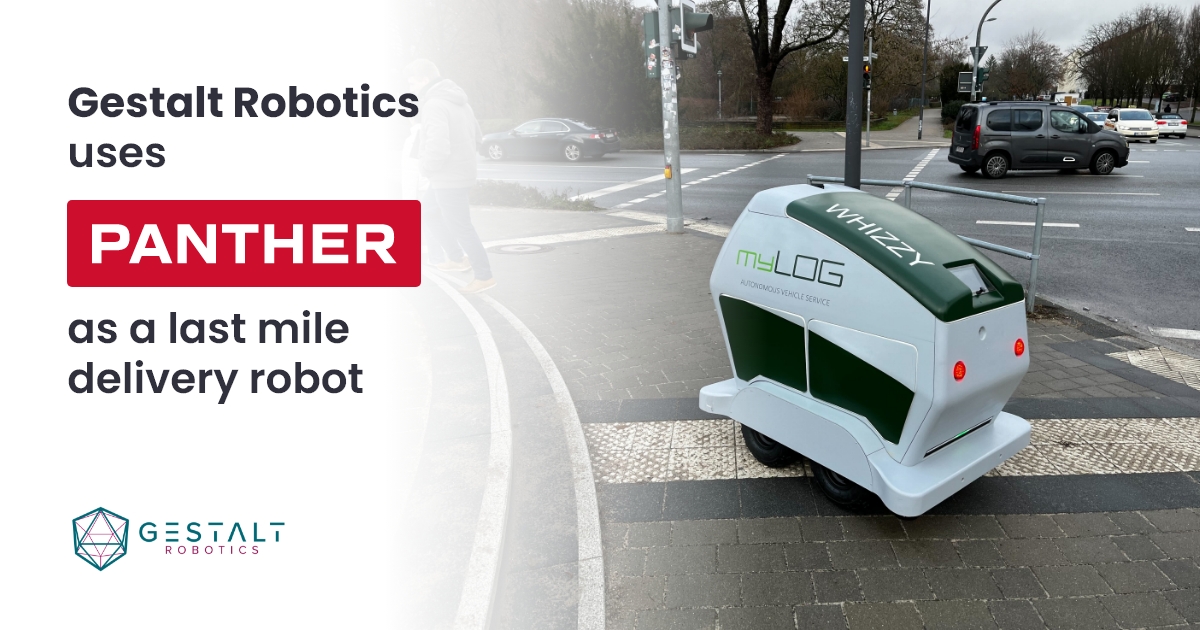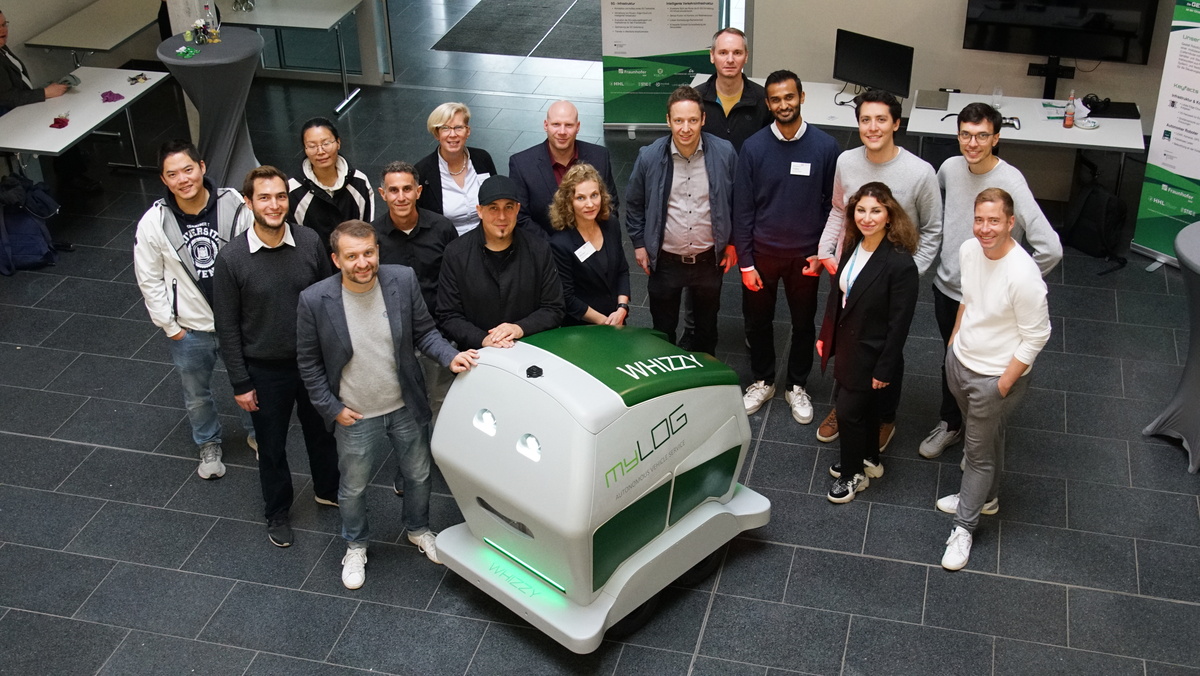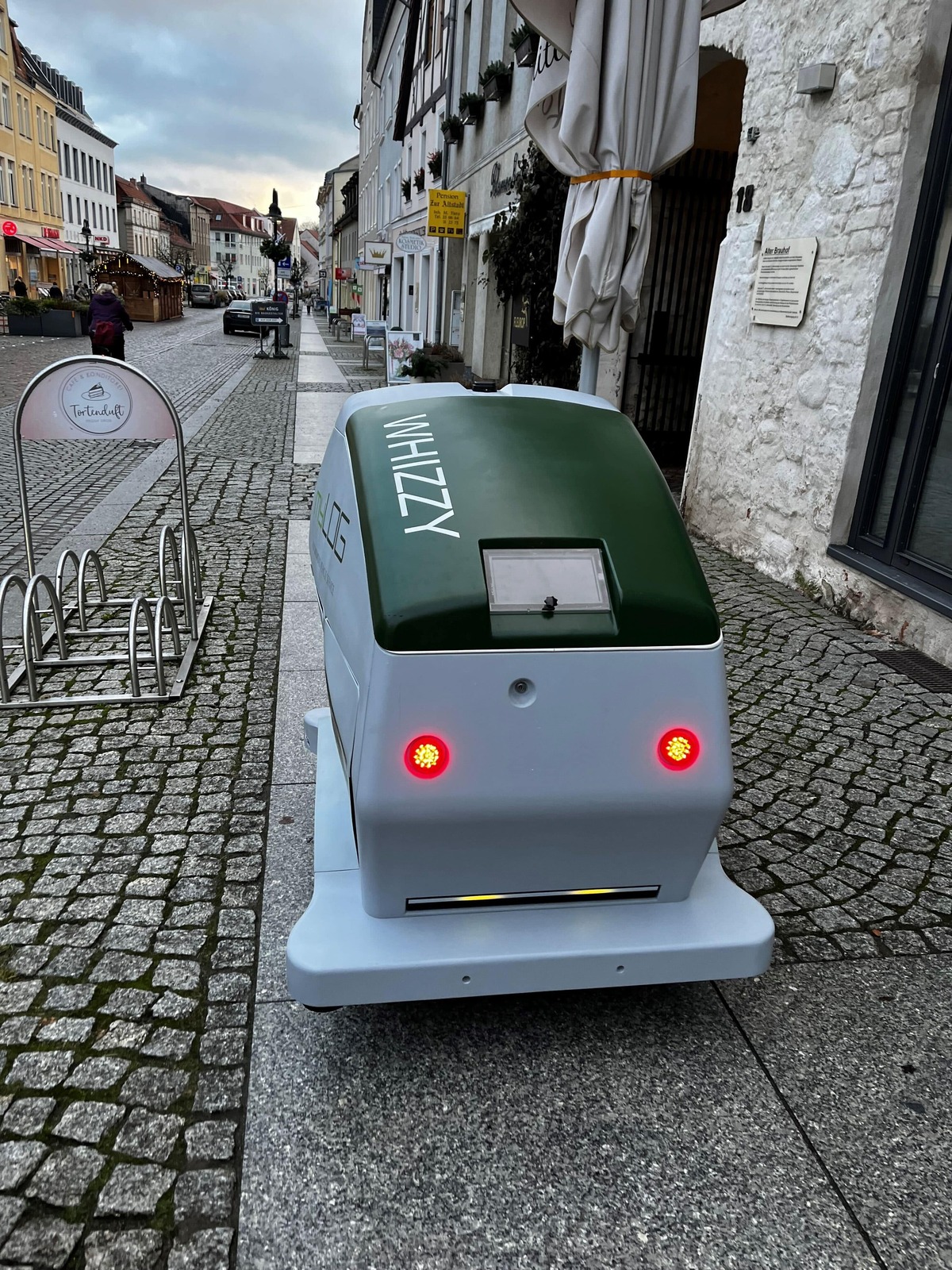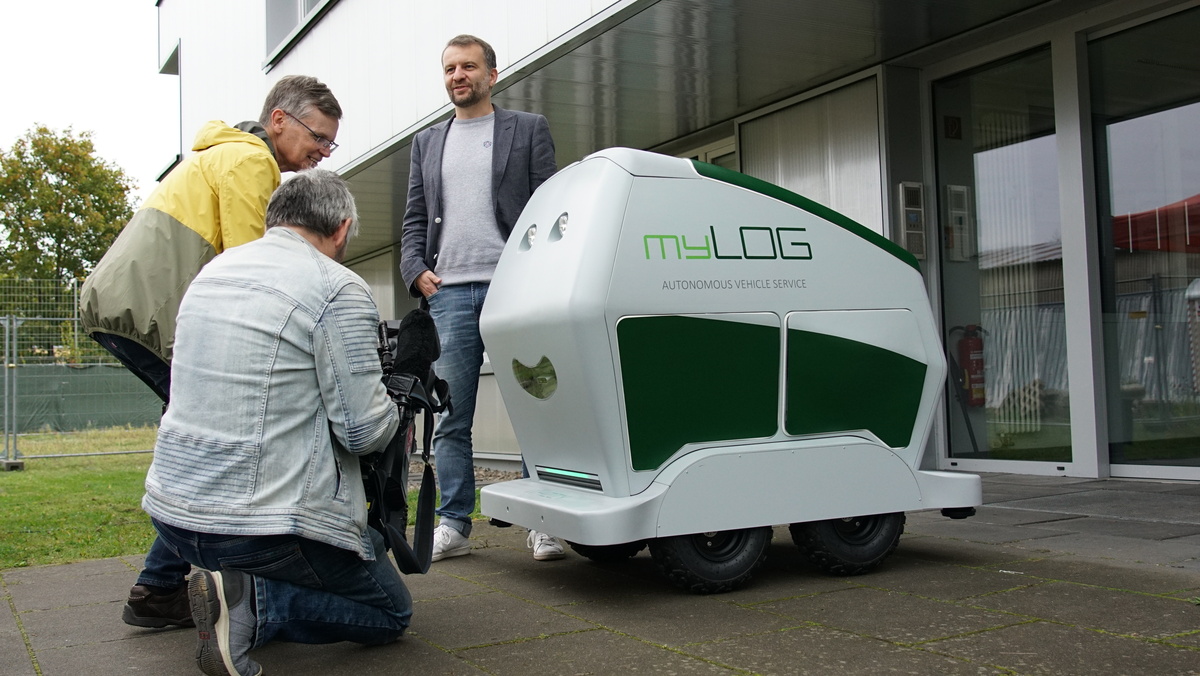Gestalt Robotics uses Panther as a last mile delivery robot
Autonomous navigation with real-time traffic analysis, supported by 5G technology and applied to the spacious mobile robot based on Husarion Panther. This is the combination that - starting from next year - will allow the myLOG system to deliver purchased goods right to the door of Strausberg residents, enabling them to order from local shops with door-to-door service.
Whizzy, as this is the name of an autonomous delivery robot developed by the consortium, has recently successfully completed its first test drive in the wild, demonstrating its capabilities and generating enthusiastic media coverage.
What is the motivation behind this project and what major challenges are yet to be faced by the platform constructors?

Robotics to the rescue of local businesses
As online retail grows, local shops are suffering from declining sales, with consumers preferring to order their goods online and have them delivered right to their houses. The problem is especially pronounced in the countryside and smaller towns, where it can lead to the desolation of the city centers and migration of retail owners to bigger cities in search of more profitable jobs.
Solving this problem is an objective of the myLOG MOL consortium, an interdisciplinary association of renowned experts from science and research, regional business development and industry. The myLOG - MOL project aims to strengthen the competitiveness of smaller local retailers compared to online-based retail by using autonomous transport rovers that enable real-time delivery to customers.

Part of the project is coordinated by Gestalt Robotics, a company founded in 2016 in Germany (Berlin) specializing in industrial automation. In the project, they are responsible for the development and evaluation of the application services and act as a service provider (robotics/navigation/sensing as a service) and data provider (AI data sets).
Their first delivery robot, Whizzy, developed on the base of Husarion Panther, will be deployed in the field as soon as early as this year, giving customers from Strausberg the ability to order their groceries and other products online from local shops and have them delivered right to their door by the robot in no time. This will allow local retailers to exploit their greatest strength: proximity to customers.
But to make it possible and implement a cost-efficient and robust navigation system, the constructors of Whizzy will have to face multiple challenges and prepare the robot to deal with unexpected conditions, such as rain, sudden obstacles or oncoming traffic. What is their strategy to approach all these challenges?
Autonomous navigation on 5G steroids
It is no secret to any robotics enthusiast that implementing autonomous navigation and path planning in a busy town center is a complex and tricky matter.
For the engineers working on the myLOG - MOL project, two main challenges were identified:
- How to gather all the necessary data on traffic and environmental conditions to ensure that the robot can choose the best path and avoid unexpected obstacles.
- How to provide the navigation system with enough computing power to perform the fusion of all important data and implement efficient navigation through the town center, while limiting the size and mass of the robot.
Their final approach relies on a 5G network. Leveraging the possibility of low-latency data transfers, they decided to move data gathering and processing outside of the robot, keeping the platform itself simple and inexpensive.

Whizzy on the test drive through the city
How exactly does it work?
First, traffic monitoring data is gathered through cameras and radars mounted at the city's intersections. Then, the data is transferred to the local edge cloud. Here, algorithms for autonomous driving are merged with traffic monitoring data and control commands are transmitted to the robot via the 5G network. A local edge cloud allows all the complex calculations to be carried out close to the rover’s operational area, which, together with the possibilities offered by the 5G network, ensures low latency.
And there are more advantages to this solution. A central navigation system will allow for the coordination of a whole fleet of delivery robots in an efficient manner, ensuring that the customer's goods are always transported by the safest and shortest path.
Peek under the Whizzy’s hood
However difficult it may be to develop a navigation system in the busy city center, we must not overlook another significant challenge in the project - constructing the delivery robot itself.
Main requirements: Whizzy should be equipped with all the sensors needed to implement efficient localization, provide sufficient payload capacity and storage compartments to fit customers’ orders, and - most importantly - be able to move smoothly through the city center in all weather conditions, ensuring the safety of fragile orders regardless of obstacles in the way.
There were several reasons why Gestalt Robotics engineers decided to use Panther as a mobile base for Whizzy.
“The main points for choosing Panther were its durable built quality which is suited for sustained outdoor use, the transparent open source software with its ROS interface and the high payload capacity - all at a very competitive price point. Especially the fact that the software on Panther is open source helped us during development since we were able to quickly reason about or fix small issues on our own.”
— Thomas Staufenbiel, CEO at Gestalt Robotics.

Thomas Staufenbiel with Whizzy on the occasion of the first test drive
What’s more, the ample internal space, multiple charging options, and ROS interface allowed engineers in the project to easily integrate Panther with all the required components, including GPS, a depth camera, two safety LiDARs, and wireless charging.
Last but not least, as the delivery robot will operate in public spaces, safety was a priority. With Panther’s advanced and configurable Emergency Management Unit, the team working on the project had no trouble integrating safety laser scanners and implementing remote safety stops.

Early-stage development: building Whizzy on Panther.
Last mile delivery service in Strausberg
Although the first milestone of the project has been successfully achieved, Strausberg citizens will still have to wait a while before they can order online from their favorite local shops. Currently, the project is in the research and development phase, with the system being tested at the campus of the Strausberg Technology Centre STIC. Before the pilot phase in Strausberg city center, many tests have yet to be performed, including simulating and testing problematic situations on the road, such as backlighting, rain, sudden obstacles, or 5G dead spots at the special test stations.
If you’re curious about the myLOG-MOL project, make sure to visit their website or watch the video from the last field test of Whizzy.
And if you think Panther may be equally useful in your use case, visit Panther manual to learn more about its capabilities, see it in our store or contact us at contact@husarion.com.
